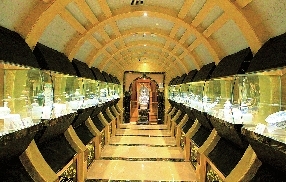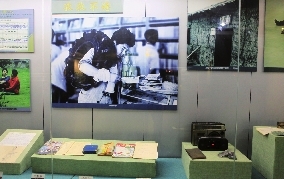
Zhizheng Art Museum
As the largest private museum in Shenzhen, the Zhizheng Art Museum is home to more than 3,000 valuable pieces of art with an estimated value of over 30 billion yuan. Managed by the Shenzhen Zhizheng Wenbo Group Ltd., the museum has outlets in Nanshan, Futian and Luohu districts. Some of the museum’s collections are family treasures that were passed down to Wu Fuqing, the museum’s president, from earlier generations, while other pieces were collected by Wu from around the world over the past two decades. A number of top domestic and international experts are advisors to the museum, such as senior researchers at the Palace Museum in Beijing. The museum is the first Chinese private museum to establish cooperative ties with UNESCO. It was authorized as a vice-chairman unit of the World Museum Strategic Cooperation Alliance under UNESCO last year.
Nantou Ancient City Museum
The Nantou Ancient City Museum is a museum in Nantou, Nanshan District. Built within the former government office of Bao’an County, the museum displays historical artifacts from across the former county. Nantou Ancient City used to serve as an administrative center for many past dynasties in South China, a coastal defense fort, and a distribution center for foreign trade and maritime traffic. With a history of more than 1,700 years, the museum is divided into indoor and outdoor exhibition areas: the indoor exhibition hall introduces the general history of Shenzhen in a chronological timeline from the Eastern Jin Dynasty (317-420) to the founding of New China in 1949; the outdoor exhibition hall displays archaeological excavations of artifacts and relics, ruins and ancient buildings located around the museum, and within the Nantou village area.
Shenzhen Bao’an Migrant
Workers Museum
The Shenzhen Bao’an Migrant Workers Museum, which covers 4,700 square meters, was built on China’s first export-oriented factory in Shiyan Subdistrict, Bao’an District. The museum, built in 2008, tells the history of migrant workers in Shenzhen. Migrant workers began to arrive in Shenzhen when the city became China’s first special economic zone in 1980. At the time, the majority of the workers were located in Bao’an.

Editor: Jane Chen